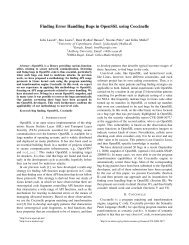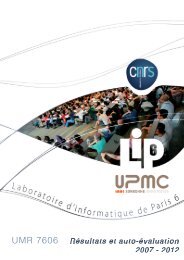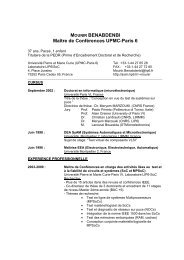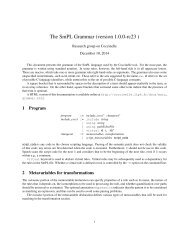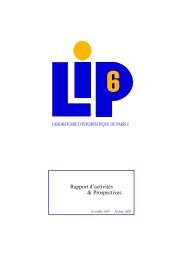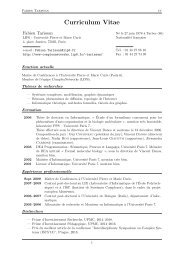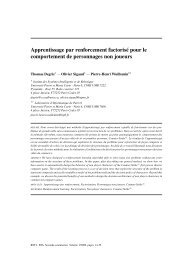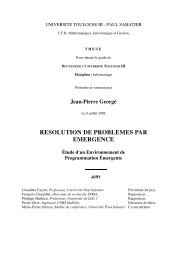Proceedings [PDF] - Measurement and Analysis of P2P Activity ...
Proceedings [PDF] - Measurement and Analysis of P2P Activity ...
Proceedings [PDF] - Measurement and Analysis of P2P Activity ...
You also want an ePaper? Increase the reach of your titles
YUMPU automatically turns print PDFs into web optimized ePapers that Google loves.
International Conference Advances in the <strong>Analysis</strong> <strong>of</strong> Online Paedophile <strong>Activity</strong> Paris, France; 2-3 June, 2009<br />
by one leading UK Internet Service Provider suggested that in July 2004 they blocked more than<br />
20,000 attempts per day to access child pornography on the Internet. More recent data from the<br />
Swedish <strong>and</strong> Norwegian blocking <strong>of</strong> access to known sites carrying child abusive images reveal as<br />
many as 15,000 – 18,000 daily attempts in Norway (Quayle, Lööf <strong>and</strong> Palmer, 2008). Such use <strong>of</strong> the<br />
WWW as a possible means <strong>of</strong> accessing child pornography was investigated by Demetriou <strong>and</strong> Silke<br />
(2003) who established a website to examine whether people, who visited for the purposes <strong>of</strong> gaining<br />
access to legal material, would also attempt to access illegal or pornographic material if it was<br />
<strong>of</strong>fered. Over an 88-day period, 803 visitors entered the site <strong>and</strong> it was found that the majority <strong>of</strong><br />
visitors accessed those sections purporting to <strong>of</strong>fer illegal or deviant material. However, material that<br />
is produced legally can also be used in a problematic way. This was demonstrated by Lehmann,<br />
Cohen <strong>and</strong> Kim (2006) in relation to the detection <strong>and</strong> management <strong>of</strong> pornography seeking in an<br />
online clinical dermatology atlas. During the study period, one third <strong>of</strong> the search queries related to<br />
anatomical sites <strong>and</strong> over half specified children.<br />
So are the anxieties expressed about the new technologies, <strong>and</strong> in particular about the use <strong>of</strong><br />
abusive images <strong>of</strong> children, simply part <strong>of</strong> a moral panic Mears et al., (2008) in a survey examining<br />
US views towards sex crimes indicated that the public supports incarceration as an appropriate<br />
response to prosecuting child pornography <strong>of</strong>fenders. The suggestion made by these authors was that<br />
Americans may support incarceration because <strong>of</strong> a belief that behaviour such as downloading abuse<br />
images will lead to a contact <strong>of</strong>fence against a child. This might also be the case why convictions<br />
sometimes attract long sentences within the US, with Greenhouse (2007) giving details <strong>of</strong> a US<br />
Supreme Court decision declining to review a case in which an Arizona man was given a 200-year<br />
sentence for possessing 20 ‘pornographic’ images <strong>of</strong> children. Yet Jenkins (2009) has argued that we<br />
see nothing constituting moral panic. It may be that while we have seen increasing anxiety about<br />
children’s agency online, which result in displays <strong>of</strong> sexual behaviour or the establishment <strong>of</strong> sexual<br />
relationships, we show much greater ambivalence towards child pornography. We are concerned with<br />
the relationship between the use <strong>of</strong> images <strong>and</strong> harm against ‘real’ children in the <strong>of</strong>fline world<br />
(largely our children), but we seem to demonstrate a much more complex level <strong>of</strong> interest in the<br />
photographic depiction <strong>of</strong> abusive <strong>and</strong> exploitative practices towards children.<br />
Jenkins (2009) attributes what he calls this ‘failure to launch’ to several factors. He argues that<br />
one main reason is technical in that law enforcement agencies work at a technological level that is too<br />
low to comprehend trade in images as it actually is. But perhaps one factor, mentioned by Jenkins, to<br />
explain some <strong>of</strong> our ambivalence towards abusive <strong>and</strong> exploitative images <strong>of</strong> children lies in our lack<br />
<strong>of</strong> knowledge on the one h<strong>and</strong> <strong>of</strong> what these images are, <strong>and</strong> an overexposure on the other to<br />
sexualised visual materials. It is not simply that we lack concern about the illegality <strong>of</strong> images, or, as<br />
demonstrated by the 200-year sentence, the potential <strong>of</strong> such <strong>of</strong>fenders to pose a further threat. Adler<br />
(2008, p3) reflects that, ‘Claims about the changing nature <strong>of</strong> child pornography are difficult to verify<br />
for a number <strong>of</strong> reasons: above all, it is extremely hard, if not impossible, to measure accurately the<br />
online environment; in addition, no one outside <strong>of</strong> government can fully assess these claims because<br />
child pornography law prohibits researchers, academics, or anyone outside <strong>of</strong> law enforcement from<br />
looking at child pornography’. Yet sexualised images <strong>of</strong> children, clearly not defined in law as child<br />
pornography, are <strong>of</strong>ten found in contexts such as advertising, (described by Rush <strong>and</strong> La Nauze, 2006,<br />
as examples <strong>of</strong> corporate paedophilia). Adler’s (2001) argument is that as we legislate more <strong>and</strong> more<br />
to control abusive images <strong>of</strong> children we potentially create a ‘a vast realm <strong>of</strong> discourse’ in which the<br />
image <strong>of</strong> the child as sexual is not only preserved but multiplied. Child pornography law socially<br />
constructs the child as sexual <strong>and</strong> one result <strong>of</strong> this construction may be that more people feel sexual<br />
desire for children.<br />
If we look at the material found in the collections <strong>of</strong> <strong>of</strong>fenders, the kinds <strong>of</strong> pictures that can<br />
be identified range from pictures <strong>of</strong> clothed children, through nakedness <strong>and</strong> explicit erotic posing to<br />
pictures <strong>of</strong> a sexual assault <strong>of</strong> the child or children in the photograph. We can make some objective<br />
sense <strong>of</strong> this by thinking <strong>of</strong> them in terms <strong>of</strong> a continuum <strong>of</strong> increased deliberate sexual victimisation<br />
(Taylor et al., 2001). This continuum ranges from everyday <strong>and</strong> perhaps accidental pictures involving<br />
either no overt erotic content, or minimal content (such as showing a child’s underwear) at one<br />
extreme, to pictures showing actual rape <strong>and</strong> penetration <strong>of</strong> a child, or other gross acts <strong>of</strong> obscenity at<br />
59


![Proceedings [PDF] - Measurement and Analysis of P2P Activity ...](https://img.yumpu.com/32964521/59/500x640/proceedings-pdf-measurement-and-analysis-of-p2p-activity-.jpg)

